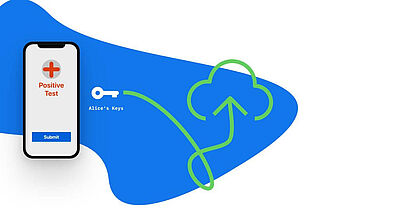During the next week, the Corona Tracing App will be activated in Germany.The implementation of the program had led to controversial debates in the past months. Numerous international scientists worldwide, including many HGI members, criticized the originally planned centralized concept in a joint statement due to data protection concerns (read more here). The public appeal has been effective. The app initiated by the German government has now been developed on the base of "DP-3T" (Decentralized Privacy-Preserving Proximity Tracing).
What is behind DP-3T and Exposure Notification?
A new online project of international students, created within the open source e-learning software "CrypTool", now illustrates the technology behind it. On a website designed specifically for this purpose, the group, under the patronage of CrypTool inventor Prof. Bernhard Esslinger (University of Siegen), aims to familiarize users to the technical processes. Users can also experiment in a playful way with how contact forwarding via tracing works. The goal: "To explain as well as possible what is hidden in decentralized tracing protocols" – so that users have the chance to shape their own opinion on the subject.
Minimal difference in the protocols
In addition to the European "DP-3T" approach, the project also focus on the "Exposure Notification" approach, which was developed by the US companies Apple and Google. "We have understood how a number of simple standard cryptographic procedures are combined in both protocols and have prepared the differences", Bernhard Esslinger (University of Siegen) explains the work of the project group. In doing so, they discovered that the protocols only differ slightly. "We are sure that the use of the Corona-Warn-App does not require any fear of surveillance on the protocol side," says Esslinger. The app's design provides no leeway for this. "But since the smartphone operating systems from Apple and Google are closed systems, it can never be guaranteed with absolute certainty that there are no secret backdoors. But if that were to happen, it would lead to a corresponding loss of privacy even without the use of a Corona warning app", Esslinger adds. For protocol details, please click here.
Realization of cryptological projects
For all those interested in cryptology, CrypTool offers opportunities to work on projects in this field. You can find more information here.
General note: In case of using gender-assigning attributes we include all those who consider themselves in this gender regardless of their own biological sex.


